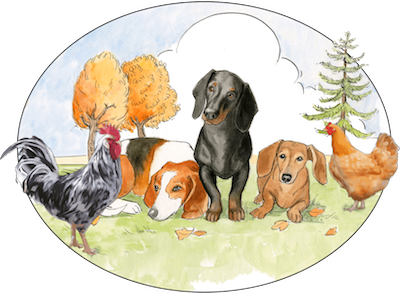7 Tips and Tricks in Getting Rid of Fleas For a Happier Dog
You have a dog who loves you so much. He gives you so much of himself; he makes you happy when you are sad, he gives you relief when you are stressed out, he cuddles up with you when you feel lonely, and watches over you when you sleep. There is nothing that your dog would not do for you. Dogs would even willingly give its life to defend you.
It is just right then, to give something back to your beloved pet for its loyalty. You feed him, give him warmth, bathe him, and basically take care of him for the rest of his life. Unfortunately, no matter how hard you try, some things still go awry. After all, you really cannot look after him 24 hours a day, can’t we?
One of the things that could go wrong is when fleas start to attack. Nobody wants fleas; not our dogs, and certainly not us. Fleas are horrible little insects that are very irritating because they bite, and their bite brings about total discomfort.
In this article, we will help you with flea control. But in order to make our success rate higher, let us learn more about these fleas, including how we can identify them.
Things you have to know about fleas…
Fleas are tiny, flightless insects that feed on the blood of mammals and birds. This includes dogs, cats, and even humans. They have reddish-brown bodies that are the size of a pinhead and are flattened sideways, which makes their navigation through the hairs of the host much easier for them. They are equipped with long claws which allows them to latch on to the skin of their hosts. They have strong legs and this makes them very good jumpers, which makes up for them not being able to fly; they transfer from one host to another through jumping. And of course, they have piercing mouth parts that enable them to suck blood from their hosts.
There are around 2,500 identified species of fleas, and they can be found all over the world. At one point in our history, they were even used as entertainers in flea circuses.
Fleas go through 4 stages in their lifetime: egg, larvae, pupae, and adult stages. Female adult fleas can lay from hundreds to a couple of thousands in their lifetime.
Signs of fleas
https://www.instagram.com/p/BMzwQp9gFx9/
Fleas may be a little inconspicuous to the naked eye, but we can always look for signs of their presence. You may check your dog’s fur for the presence of flea feces. This comes in the form of brown specks of dirt. To test if these are indeed fecal matter, grab a paper towel to pick them off. If after a few minutes these specks spread out like bloodstains, then your dog has fleas.
If you notice an increased scratching and licking by your dog, it is possible that he has fleas. Look for fleas on your dog’s belly, armpits, ears, inner thighs, and tail.
Fleas may not only be found on your dog’s body, but they can also be found in areas where your dog frequents.
Fleas are disease-carrying insects
Fleas not only do damage through their itchy bites, they are also known to spread diseases. Some of them are potentially serious and need immediate medical attention.
Some of the diseases that fleas are known to spread are the bubonic plague, murine typhus, tularemia, and tungiasis. Yes, it is THAT bubonic plague. The disease that eradicated more than half of the world’s population during the Middle Ages.
Controlling the fleas
Fleas are terrible to have around the house. Their bites are very irritating not only to pets but to their human owners as well. We have listed below some tips to help you battle these unwanted visitors:
- Look to the areas where your dog frequents. It may be on the carpet, on the couch, and on his bed. Then sprinkle diatomaceous earth on these areas. Diatomaceous earth is in powder form and is best described as like tiny shards of broken glass. When crawled on by fleas, it would cause tiny cuts on their bodies. Eventually, they would bleed to death. Diatomaceous earth is safe enough to be applied on the dog’s coat as well. Be careful not to hit the eyes, ears, and mouth. Diatomaceous earth works only when dry. Reapply once a week for one month.
- Use a vacuum cleaner on these areas to pick off the fleas that may have survived, plus the eggs. After vacuuming, seal the vacuum’s bag and dispose of properly. This is to ensure none of the fleas would be able to return.
- Fleas abhor apple cider vinegar. To them, the scent of vinegar is very unpleasant. Mix equal parts water and vinegar in a spray bottle. Spray this on your pet’s coat for protection.
- Table salt is an effective killer of fleas. How does salt do this? Salt dehydrates fleas and dries them out, thus killing them eventually. Sprinkle this around the house. Leave for a few hours, then vacuum the areas where you sprinkled the salt. Throw away the vacuum’s bag properly.
- Another helpful natural repellent is lemon. To make a lemon spray, boil the lemons and let it seep overnight. This will let the oil and juices mix with the water. Spray over furniture, bedding, carpet, and directly on your pet’s coat. Refrigerating the lemon spray can make it last for one week.
- You can also use boric acid. This works in the same way as table salt: it dehydrates them and dries them out to kill them. Sprinkle boric acid on areas where you think there are fleas. To make sprinkling easier for you, use a shaker. Be sure to label it as “Boric Acid” to avoid confusion with other ingredients in the kitchen.
- If you are just beginning to have a flea infestation in your home, use rosemary for flea control. It can be in powder or oil form. Seep rosemary in hot water and apply on your pet’s fur. Remember that this is good only for dogs and cannot be used for cats.
AUTHOR: Allan Joaquin writes articles about pests and pest control methods for Go-Forth Pest Control. He loves dogs, and wishes to see each of man’s best friend happy and flee from fleas.


